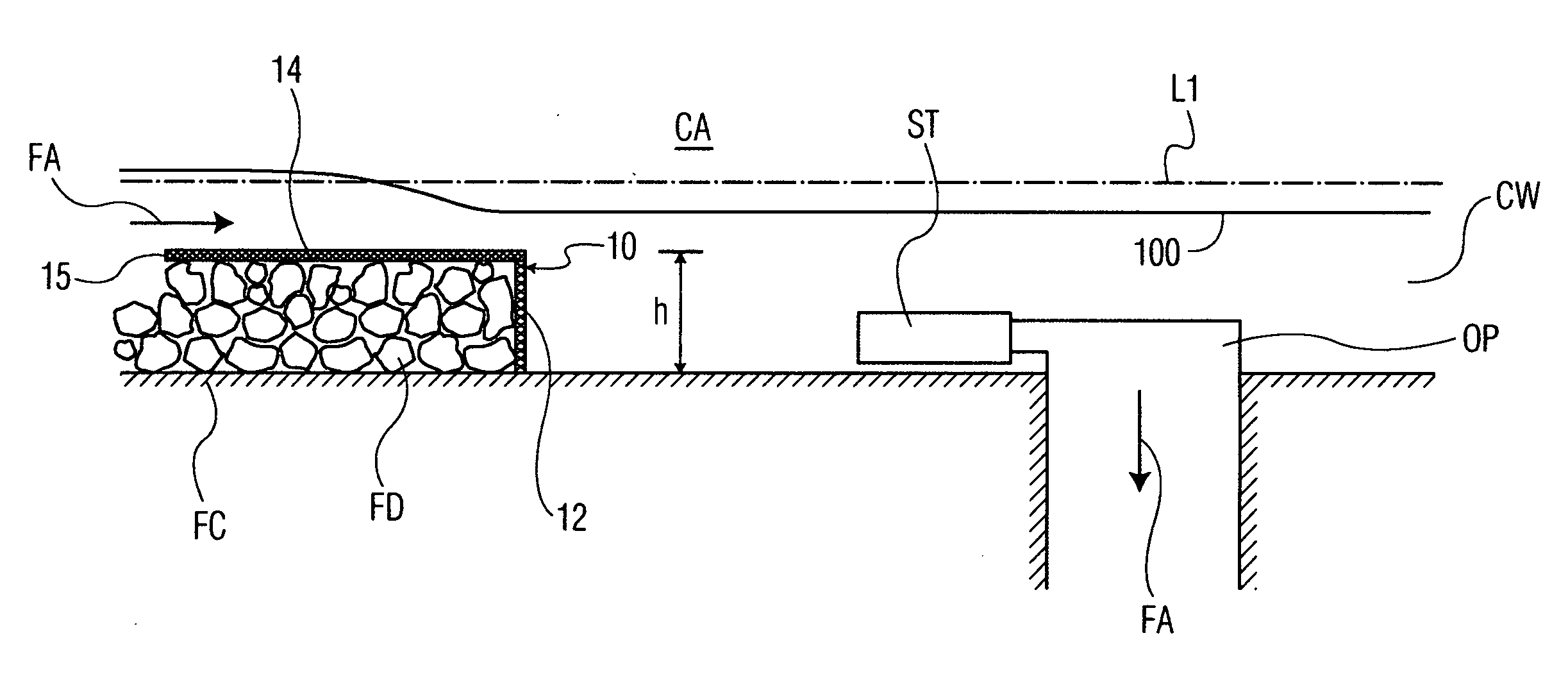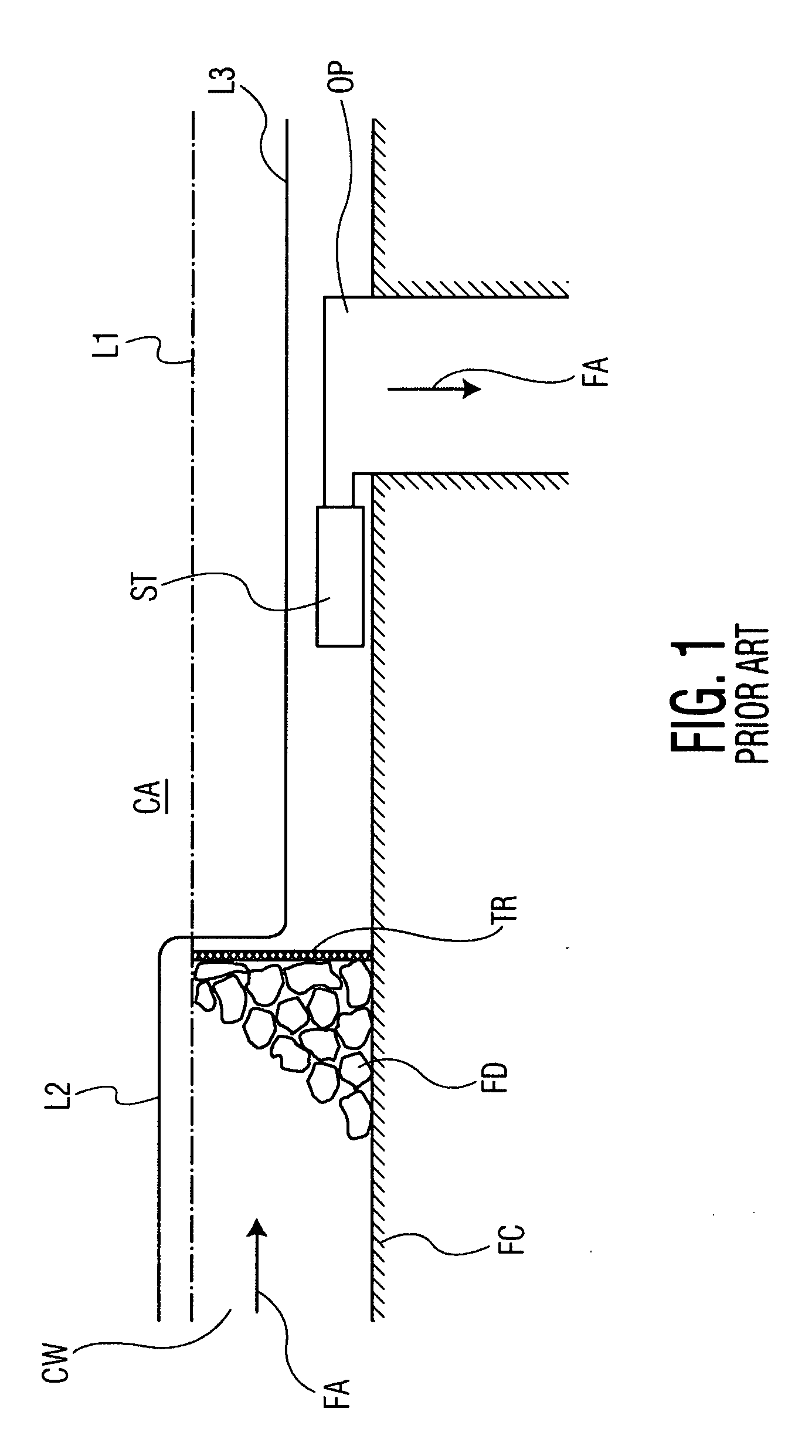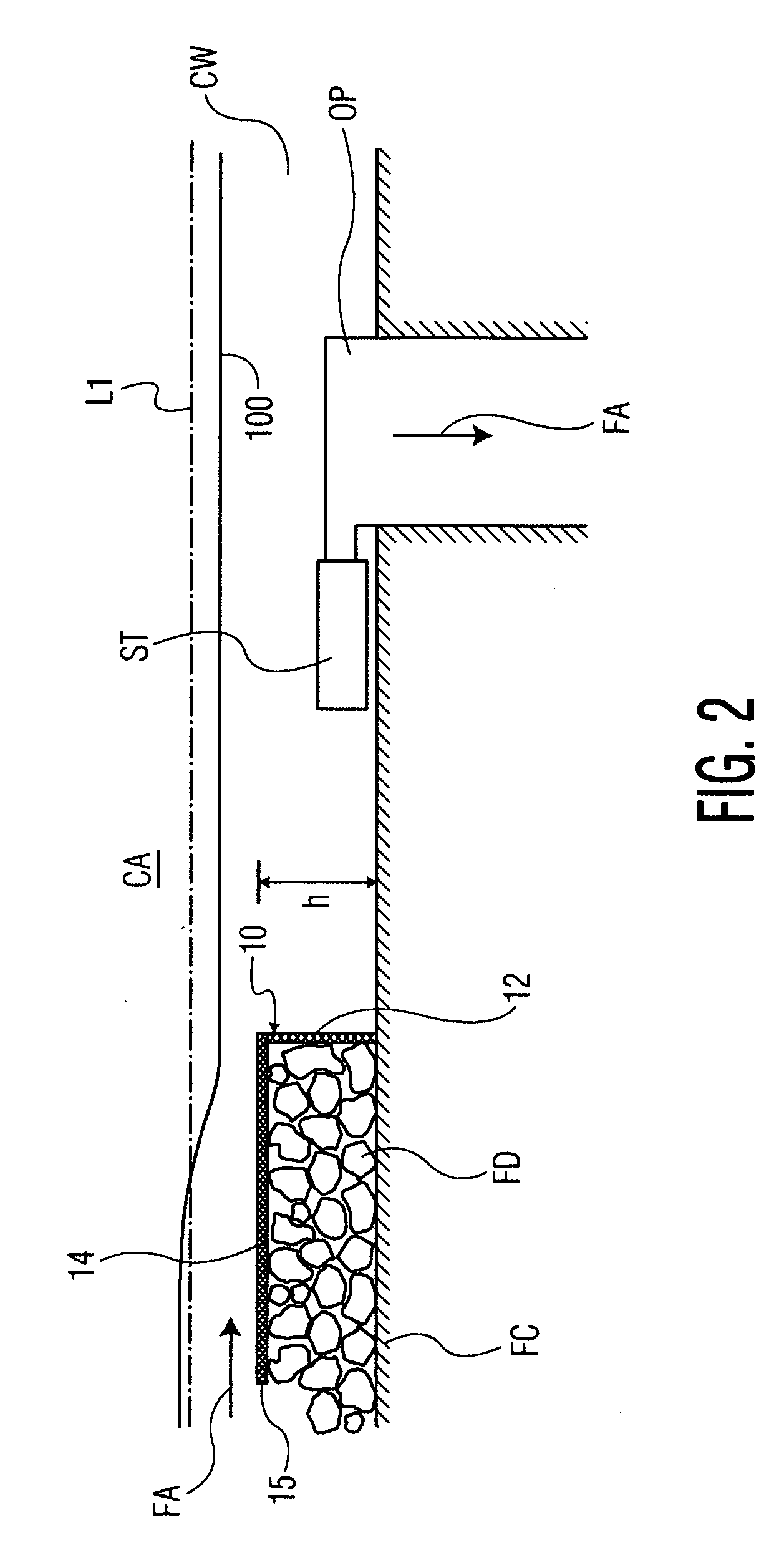Trash rack for nuclear power plant
a technology for nuclear power plants and trash racks, which is applied in the direction of nuclear elements, greenhouse gas reduction, separation processes, etc., can solve the problems of large strainer heads, large strainer designs, and reduced strainer design. , to achieve the effect of safe pressure head
- Summary
- Abstract
- Description
- Claims
- Application Information
AI Technical Summary
Benefits of technology
Problems solved by technology
Method used
Image
Examples
Embodiment Construction
[0028]FIG. 2 schematically illustrates a trash rack 10 in accordance with a basic embodiment of the present invention installed in a reactor containment area CA in a fashion similar to that shown in FIG. 1, namely so that coolant flow FA passes through the trash rack 10 before it reaches the strainer ST and the outlet pipe OP. The trash rack 10 includes a generally upright panel member 12 that in this embodiment is a heavy wire-mesh sheet (woven in a manner similar to a window screen) that is strong enough to withstand the hydrodynamic forces exerted by the coolant flow when the member 12 becomes partially or wholly blocked by the debris FD. The panel member 12 is generally planar and is secured in place perpendicular to the floor FC with its bottom edge in mating contact with the floor.
[0029] In addition, the trash rack 10 includes a generally planar roof panel member 14 that in the present embodiment is also a wire-mesh sheet. The downstream edge of the roof member 14 is disposed...
PUM
| Property | Measurement | Unit |
|---|---|---|
| Angle | aaaaa | aaaaa |
| Cell angle | aaaaa | aaaaa |
| Cell angle | aaaaa | aaaaa |
Abstract
Description
Claims
Application Information
 Login to View More
Login to View More - R&D
- Intellectual Property
- Life Sciences
- Materials
- Tech Scout
- Unparalleled Data Quality
- Higher Quality Content
- 60% Fewer Hallucinations
Browse by: Latest US Patents, China's latest patents, Technical Efficacy Thesaurus, Application Domain, Technology Topic, Popular Technical Reports.
© 2025 PatSnap. All rights reserved.Legal|Privacy policy|Modern Slavery Act Transparency Statement|Sitemap|About US| Contact US: help@patsnap.com



